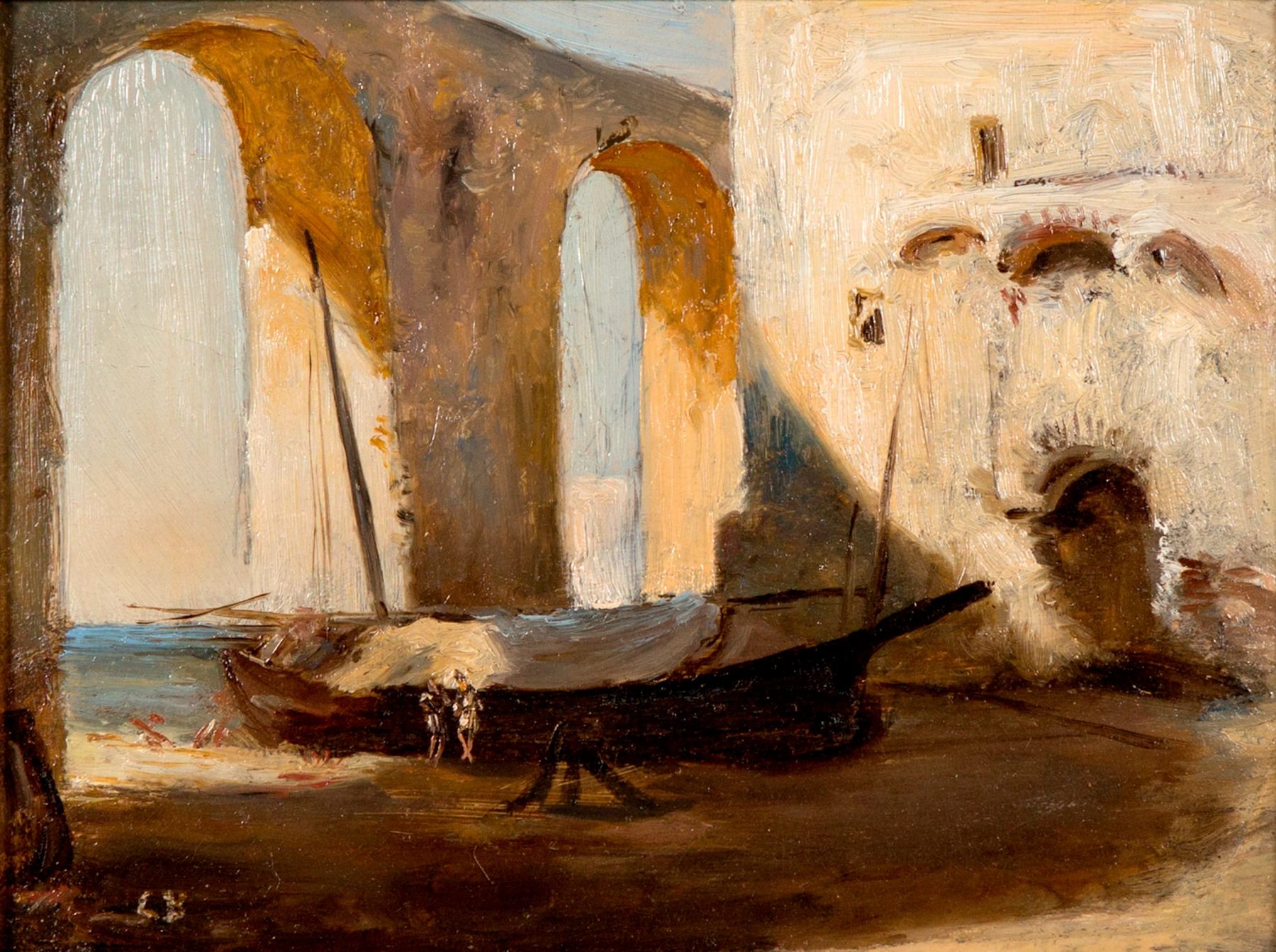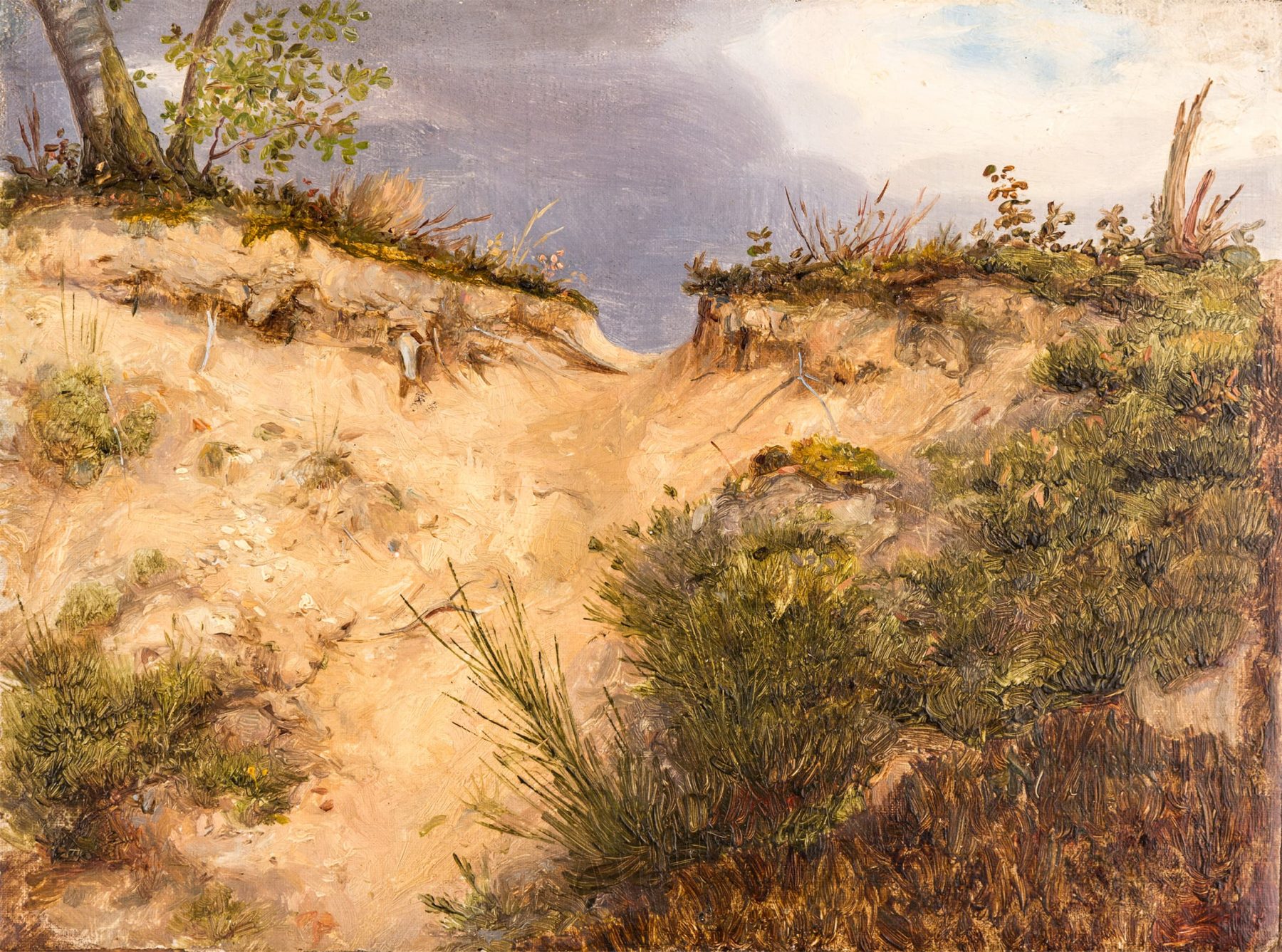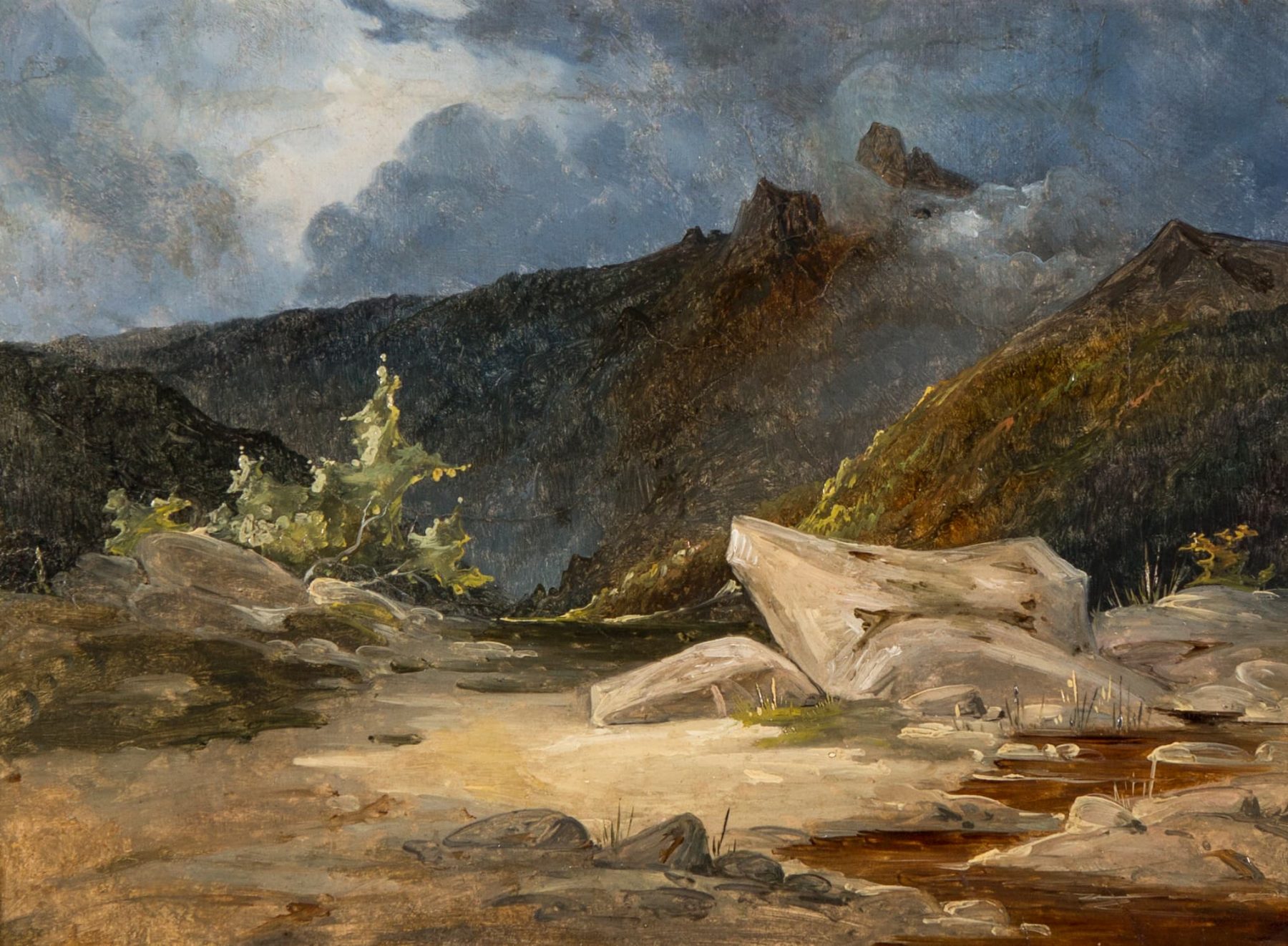About the exhibition
Carl Blechen (1798-1840) stands alongside Caspar David Friedrich as one of the most important German landscape painters of the early 19th century. Dramatic light and glowing colours characterise his works. Blechen was highly regarded during his lifetime – his works were collected during the 19th century by both the Academy of Arts and the National Gallery in Berlin. In 1913, Blechen’s home town of Cottbus established their own Blechen collection, today housed in the Stiftung Fürst- Fürst-Pückler-Museum Park und Schloss Branitz. In the late 19th and early 20th centuries, major exhibitions in Berlin cemented Blechen’s artistic reputation.
Following Liebermann’s appointment as president of the Academy of Arts in Berlin, one of his first exhibitions at the Academy was a Blechen retrospective, which opened in November 1921. Some 80 years after Blechen’s early death, Liebermann assembled some 120 Blechen works in the Academy’s rooms on Pariser Platz. In his accompanying text, Liebermann confirmed Blechen’s great artistic impact:
“One of the chosen few […] who not only belonged to the best of his time – and was incidentally regarded as such by his contemporaries […] – but who had also exerted a decisive influence on the best of his time […].”
Max Liebermann especially praised the studies from Blechen’s trip to Italy in 1828-1829, which he regarded as clear precursors of Impressionism. Liebermann noted how, In these paintings, Blechen had succeeded in painting his subjective perception into a naturalistic image, as he continued in his exhibition text:
“The studies he brought back from [Italy] (often in the smallest format) give the highest that a painter has to give, they reproduce what Blechen saw. The simplest and therefore the most difficult.”
To mark the 100th anniversary of the 1921 Academy exhibition, the Liebermann Villa is showing a selection of Blechen’s works from the collection of the Stiftung Fürst-Pückler-Museum in Cottbus. The show sets out to explore Blechen’s artistic influence on Liebermann. What did Liebermann find so fascinating about Blechen’s work? What is the significance of the Cottbus landscape painter for the development of modern painting? How does Liebermann’s assessment fit into the long and changeable reception history of the landscape painter between Romanticism, Modernism and National Socialism?






